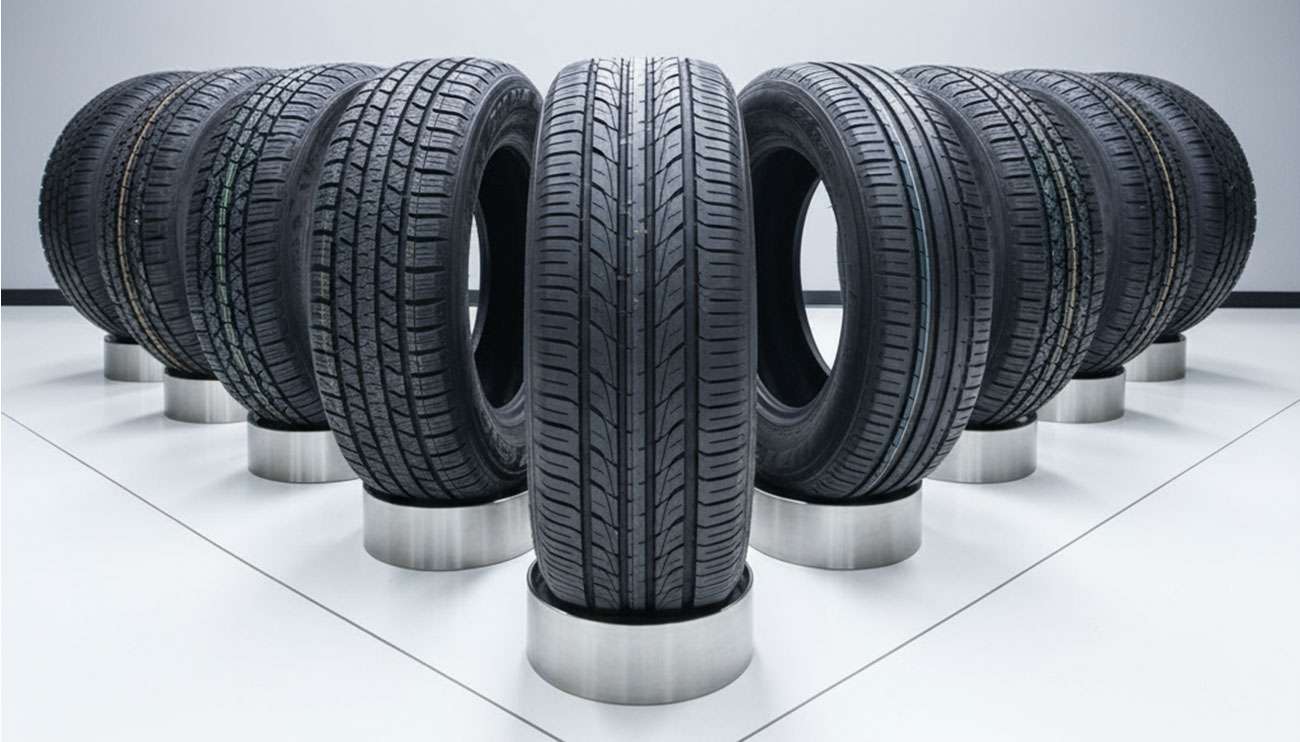
Tire replacement demands smart decision-making, not impulse buying. Most vehicles require new tires every 40,000-60,000 miles, making your understanding of tire types crucial for safe and cost-effective vehicle ownership.
We believe selecting the right tires goes far beyond basic wheel fitment. Each tire category serves specific driving conditions and performance requirements. All-season tires deliver balanced performance across dry, wet, and light snow conditions. For extreme off-road adventures, specialized mud-terrain tires provide the aggressive traction needed for challenging terrain.
Quality matters when choosing tire brands. Industry leaders like Michelin and Goodyear have earned their reputation through decades of reliable performance. The best manufacturers put their products through rigorous testing, running tires around the clock and covering over 1,000 miles daily in demanding treadwear evaluations.
Regular tread depth inspections help determine replacement timing, but knowing which tire type to choose requires expert guidance. We've organized this guide to cover the 11 most popular tire categories, helping you select options that deliver the best combination of performance, safety, and value for your specific driving needs.
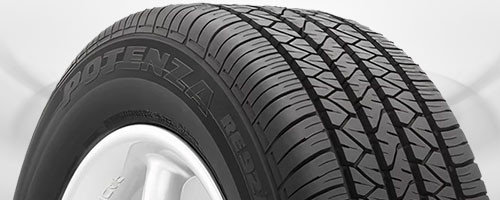
All-season tires dominate the market for good reason. These versatile performers combine characteristics from summer and winter tire designs, delivering practical year-round performance for most driving conditions.
All-season tires excel through smart engineering choices. Large tread blocks provide solid dry traction while smaller grooves effectively channel water away, reducing hydroplaning risks on wet roads. The rubber compound strikes an important balance—staying flexible in cold weather yet maintaining durability when temperatures rise.
Siping makes these tires special. These small slits cut into tread blocks create additional "biting edges" that enhance grip on wet and mildly snowy surfaces. Most all-season tires carry the "M+S" (Mud and Snow) designation, confirming their capability in light winter conditions.
This adaptive compound delivers reliable performance on both wet winter roads and dry summer pavement. The moderate tread depth provides consistent control year-round without being too aggressive or too conservative.
Benefits:
Year-round convenience: No seasonal tire changes required, saving time and labor costs
Budget-friendly: More economical than buying separate winter and summer tire sets
Balanced performance: Handle dry, wet, and light snow conditions adequately
Extended wear: Many models deliver up to 50,000 kilometers of reliable service
Limitations:
Jack-of-all-trades performance: Adequate in most conditions but don't excel in any specific situation
Cold weather struggles: Rubber compound stiffens below 45°F (7°C), reducing grip and handling
Winter limitations: Can't match dedicated winter tires in heavy snow, ice, or freezing temperatures
Heat sensitivity: Less heat-resistant than summer tires, affecting performance in extreme hot conditions
All-season tires work best in moderate climates where extreme weather stays rare. Urban areas like Vancouver or Toronto, with mild winters and well-maintained roads, represent ideal conditions.
Drivers in regions that rarely see temperatures below 45°F will find all-season tires an excellent year-round choice. These tires perform optimally with minimal snowfall, temperatures above freezing, and mostly clear road conditions.
For those wanting convenience without dealing with harsh winters or scorching summers, all-season tires offer the right compromise. They won't match specialized seasonal options for specific conditions, but they provide sufficient versatility for most daily driving needs throughout the year.
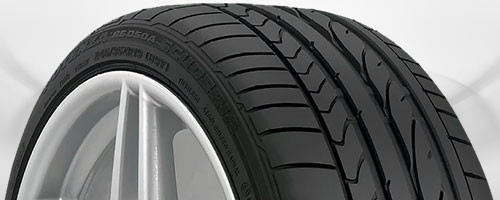
Summer tires deliver maximum performance when temperatures rise above 45°F, offering specialized engineering that enhances your vehicle's capabilities on both dry and wet roads. These performance-focused options provide the responsive handling and superior grip that driving enthusiasts demand during warmer months.
The key to summer tire performance lies in their specialized rubber compound, which stays soft and flexible in warm temperatures to maximize road contact and grip. These tires feature shallower tread depths with straighter grooves and continuous ribs that increase the amount of rubber touching the road surface.
Summer tires use fewer grooves and larger tread blocks than all-season alternatives, creating a substantial contact patch that improves traction, handling, and braking performance. The tread design incorporates special compounds and patterns engineered for efficient water evacuation, reducing hydroplaning risks when driving in rain.
At temperatures above 45°F (7°C), summer tires maintain optimal flexibility and grip through their specialized rubber formulation. Enhanced internal reinforcement provides the precise handling characteristics and steering responsiveness that performance vehicles require.
Pros:
Superior Handling: Excellent grip, cornering ability, and responsive steering on dry and wet surfaces
Enhanced Braking: Shorter stopping distances on warm pavement due to specialized compounds
Wet Weather Performance: Tread patterns designed to channel water effectively, minimizing hydroplaning risk
Fuel Efficiency: Lower rolling resistance can improve gas mileage compared to other tire types
Heat Resistance: Better heat dissipation prevents performance loss in hot conditions
Cons:
Cold Weather Limitations: Rubber hardens below 45°F, reducing traction and increasing accident risk
Shorter Lifespan: Typically last 20,000-40,000 miles—about half the life of all-season tires
Cost Considerations: Seasonal changes in variable climates increase total tire expenses
Limited Rotation Options: Directional tread patterns restrict rotation, potentially causing uneven wear
Summer tires excel in consistently warm climates or for seasonal use during warmer months. These tires perform best above 45°F, making them perfect for southern regions or summer driving in areas with variable climates.
Performance-oriented vehicles and drivers who prioritize precise handling benefit most from summer tires' superior grip and cornering capabilities. Many sports car owners maintain separate summer tire sets for track days or spirited driving, switching to all-season options for daily use.
For urban areas with warm climates and occasional rainfall, summer tires provide optimal dry performance and wet traction without the compromises of all-season alternatives.
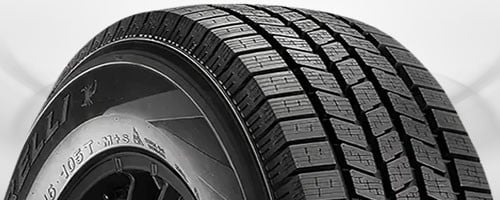
When temperatures drop below 44.6°F (7°C), winter tires become essential safety equipment, not optional accessories. These specialized tires deliver crucial performance advantages that can mean the difference between safe winter driving and dangerous situations on snow and ice.
Winter tires use a unique rubber composition engineered to remain flexible in freezing conditions. While all-season and summer tires harden and lose grip in cold weather, winter tire compounds maintain their suppleness for superior traction on slippery surfaces.
The aggressive tread design sets winter tires apart visually and functionally. Deep tread depths combined with wider grooves provide better snow evacuation and traction in deep winter conditions. Thousands of fine cuts called "sipes" create additional biting edges that grip ice and packed snow like tiny claws.
Look for the Three-Peak Mountain Snowflake (3PMSF) symbol on the sidewall—this certification indicates the tire has passed rigorous testing for severe winter performance. Studded versions offer even more traction, with metal spikes that penetrate through ice for maximum grip.
Pros:
Dramatically improved braking performance—up to 30% shorter stopping distances in snow
Superior cold-weather flexibility maintains traction below 44.6°F
Enhanced cornering stability provides confident steering control on winter roads
Significant safety improvement reduces winter accident risk
Insurance discounts available from some providers for winter tire users
Cons:
Temperature-sensitive performance requires removal above 45°F
Additional expense for seasonal mounting and dismounting services
Storage space needed for off-season tire storage
Compromised dry-road handling compared to all-season alternatives
Accelerated wear when used in warm weather conditions
Winter tires excel in regions where temperatures consistently stay below 44.6°F (7°C) for months at a time. These become mandatory equipment rather than optional upgrades in areas experiencing four to six months of true winter weather.
The "7/7 rule" provides clear installation guidance—mount winter tires when temperatures remain below 7°C for seven consecutive days. Remove them when temperatures stay above 7°C for the same period to prevent unnecessary wear.
Complete four-tire installation ensures optimal safety and performance regardless of your vehicle's drive configuration. Installing winter tires only on drive wheels creates handling imbalances that actually increase accident risk.
Some regions like Quebec mandate winter tire use by law during specified months, recognizing their critical importance for winter safety. Even with winter tires, reduced speeds remain necessary on icy roads since no tire eliminates all winter driving risks.
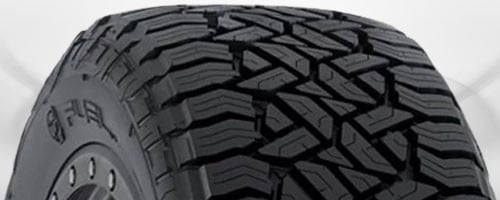
All-terrain tires represent the perfect compromise for drivers who refuse to choose between on-road comfort and off-road capability. These versatile performers bridge the gap between highway-focused all-season options and aggressive off-road specialty tires, making them increasingly popular among truck and SUV owners who demand both daily reliability and weekend adventure capability.
All-terrain tires showcase distinctive chunky, rugged tread patterns specifically engineered to deliver superior traction across varied conditions including sand, mud, and loose gravel. The design incorporates deeper tread depths than standard all-season alternatives, with larger, more defined blocks and tread elements that often extend onto the tire's shoulder.
Construction quality sets all-terrain options apart. Many models feature reinforced sidewalls that resist punctures when navigating sharp rocks. This enhanced construction allows them to handle the stress of running at lower tire pressures when "aired down" for challenging terrain.
The Three-Peak Mountain Snowflake certification appears on numerous all-terrain models, indicating superior traction on packed snow compared to standard options. Additionally, these tires typically offer wraparound tread that extends several inches up the sidewall, providing extra protection against punctures.
Pros:
Versatility across both paved and unpaved surfaces
Excellent traction in various conditions including wet, snowy, and loose terrain
Enhanced durability with tough construction resistant to punctures and cuts
Rugged, aggressive appearance that many drivers find esthetically appealing
Cons:
Increased road noise compared to highway tires due to aggressive tread patterns
Stiffer ride quality leading to less comfort, especially on longer drives
Higher initial cost than standard highway tires
Reduced fuel economy due to higher rolling resistance from aggressive tread
All-terrain tires excel for drivers who split their time equally between paved roads and off-road conditions. They're ideal for weekend adventurers who rely on their vehicles for both daily commuting and outdoor activities like camping or trail exploration.
These tires are particularly well-suited for light trucks, pickup trucks, SUVs, and 4-wheel drive vehicles that regularly encounter varied terrain. Keep in mind that tires excelling in deep sand or thick mud typically increase stopping distances and decrease cornering grip on pavement.
When selecting all-terrain tires, consider your vehicle's weight requirements. Choose C-rated tires for moderately-loaded vehicles and E-rated options for heavier vehicles or those regularly carrying substantial loads.
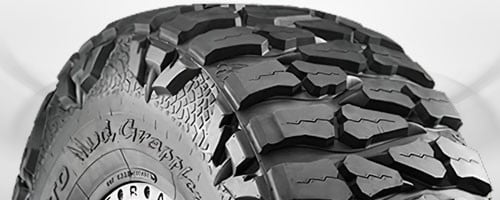
Mud-terrain (M/T) tires deliver the ultimate off-road performance for drivers who demand maximum traction in the most challenging conditions. These specialized tires represent the most aggressive option available, engineered specifically for extreme terrain where standard tires simply can't perform.
Aggressive tread patterns define mud-terrain tires, featuring large, chunky tread blocks separated by wide voids that allow effective mud and debris evacuation as the tire rotates. This self-cleaning design prevents tread clogging and maintains continuous traction even in the deepest, stickiest conditions.
Construction focuses on durability and puncture resistance. M/T tires feature reinforced sidewalls, often with 3-ply designs that withstand sharp rocks and trail hazards. Special "side biters" or textured sidewall lugs provide additional grip when navigating deep ruts or when running at reduced air pressures for rock crawling.
The rubber compounds stay flexible and grippy in challenging off-road environments. Kick-out bars—specialized tread features designed to eject stones and mud—keep the tread voids clear for consistent performance.
Pros:
Maximum off-road traction in deep mud, sand, and rocky terrain
Superior self-cleaning ability through high void ratios and wide lug spacing
Reinforced sidewalls offer excellent puncture resistance
Consistent performance in warm-weather off-road conditions
Cons:
Significantly louder road noise compared to all-terrain or highway options
Poor wet pavement traction due to limited water channeling
Shorter tread life, particularly with frequent on-road use
Reduced fuel economy from higher rolling resistance
Limited effectiveness in cold, wet weather
Mud-terrain tires excel for vehicles spending considerable time in extreme off-road conditions. They're perfect for serious off-road enthusiasts tackling steep trails, deep mud, rock crawling, or sandy terrain. Most manufacturers recommend M/T tires for vehicles spending roughly 50% of their time off-road.
Weekend adventurers who occasionally venture off-pavement may find the compromises in road noise, fuel economy, and tread life difficult to justify. For dedicated off-roaders who regularly face challenging conditions or compete in off-road events, the enhanced traction and durability make the difference between conquering obstacles and getting stuck.
Consider your driving priorities carefully—superior off-road capabilities come with significant on-road trade-offs that mud-terrain tires inevitably require.
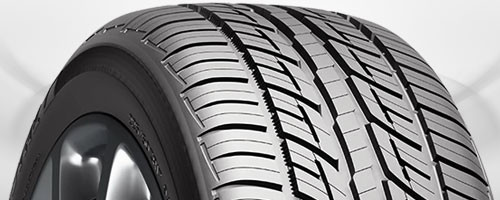
Performance tires deliver specialized engineering focused on grip, responsiveness, and precise handling capabilities. These tires represent a significant upgrade for drivers who demand maximum vehicle performance on dry and wet road surfaces.
Performance tires utilize specialized rubber compounds that remain softer than standard tires, creating exceptional road contact for enhanced grip. This advanced composition directly improves acceleration, braking performance, and cornering stability. The wider contact patches found on performance tires increase the rubber-to-road surface area, maximizing overall traction capabilities.
These tires feature shorter sidewall construction that reduces flex during aggressive cornering, delivering more precise steering response. Performance tires carry higher speed ratings—H (130 mph), V (149 mph), Z (over 149 mph), W (168 mph), or Y (186 mph)—reflecting their racing-inspired heritage.
The tread patterns incorporate specialized designs optimized for both dry and wet handling conditions. Advanced heat dissipation properties allow these tires to maintain consistent grip during high-speed driving and sharp cornering maneuvers.
Pros:
Superior grip and handling performance on dry and wet surfaces
Enhanced braking capabilities with reduced stopping distances
Sharper steering response and cornering precision
Improved stability at higher speeds
Stylish designs that enhance vehicle appearance
Cons:
Shorter lifespan—typically 20,000 to 30,000 miles versus 55,000+ for all-season tires
Increased road noise and firmer ride quality
Reduced fuel efficiency due to higher rolling resistance
Higher initial cost compared to standard tires
Poor performance in cold weather and snow conditions
Performance tires excel on sports cars, sports coupes, and high-performance vehicles that demand superior traction capabilities. Their application has expanded to include performance SUVs and crossovers like the Porsche Cayenne GTS.
These tires are ideal for driving enthusiasts who value responsive handling and occasionally participate in track events. Drivers in warm climates who prioritize handling precision over comfort or longevity will find performance tires well-suited to their requirements.
For drivers seeking balanced performance with all-season versatility, options like the Firestone Firehawk AS V2 provide enhanced handling capabilities while maintaining greater adaptability across varying weather conditions.
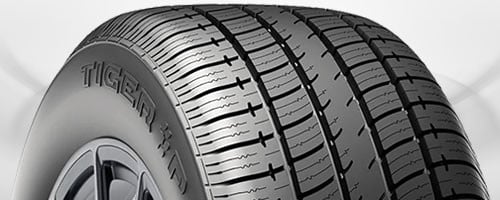
Built for drivers who value comfort above aggressive performance, touring tires deliver the smooth, quiet ride quality that makes daily commuting more enjoyable. These tires represent the best choice for everyday vehicles where long-term comfort and durability matter most.
Touring tires feature specialized rubber compounds and flexible sidewall construction engineered to absorb road imperfections and minimize cabin noise. The tread design focuses on creating exceptionally quiet operation, reducing road noise to levels that make long drives more pleasant.
These tires incorporate effective siping patterns that provide reliable wet and dry traction without sacrificing ride comfort. Wide tread footprints distribute vehicle weight evenly, promoting consistent wear patterns and stable handling characteristics. Most importantly, their durable compound construction often delivers exceptional longevity, with many models backed by warranties up to 80,000 miles.
Pros:
Superior ride comfort with smooth, cushioned feel
Minimal road noise for quieter cabin experience
Dependable traction across various weather conditions
Extended tread life for excellent value
Enhanced fuel economy through reduced rolling resistance
Cons:
Limited capability in severe winter or off-road conditions
Less responsive handling compared to performance-oriented options
Reduced effectiveness in heavy snow or extreme terrain
Premium models can carry higher price points
Touring tires shine for drivers who spend most of their time on highways and city streets. We recommend these tires for sedans, family SUVs, minivans, and passenger cars where comfort takes priority over sporty handling. Road trip enthusiasts particularly benefit from the smooth, stable ride quality and reduced fatigue during extended driving.
Drivers seeking reliable year-round performance with maximum comfort in normal driving conditions will find touring tires perfectly suited to their needs.
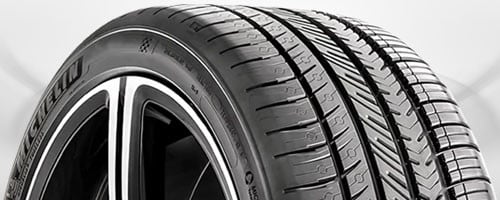
Flat tires happen at the worst possible moments—during storms, on busy highways, or in unsafe locations. Run-flat tires solve this problem by keeping you moving even after complete air pressure loss, eliminating dangerous roadside tire changes.
Run-flat technology works through two proven design methods. The self-supporting sidewall system features ultra-stiff, reinforced sidewalls approximately ¾" thick (versus ⅛" on standard tires). The supporting ring system uses a central hardened rubber ring to maintain structure when air pressure is lost.
These tires can support your vehicle for up to 50 miles at speeds up to 50 mph after a puncture. Every vehicle using run-flat tires requires a Tire Pressure Monitoring System (TPMS), as you might not notice pressure loss otherwise.
Pros:
Enhanced safety with better vehicle control during sudden air loss
Convenience of avoiding roadside tire changes
Space-saving by eliminating the spare tire, wheel, jack, and tools
Near-normal handling after punctures
Cons:
Higher replacement cost—often 25-100% more expensive than conventional tires
Noticeably stiffer ride quality
Cannot be repaired—must be replaced after being driven flat
Shorter tread life, wearing out approximately 6,000 miles sooner
Run-flat tires work best for luxury vehicles and drivers who prioritize safety over comfort. Approximately 15% of new vehicles sold in the U.S. come equipped with them. Urban drivers with easy access to tire shops benefit most, as the 50-mile range ensures reaching service facilities after punctures.
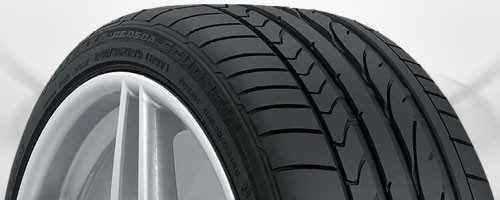
Ultra-high-performance (UHP) tires represent the ultimate expression of tire engineering, designed for drivers who demand maximum speed capability and razor-sharp handling precision. These specialized tires push performance boundaries far beyond what standard options can deliver.
Advanced rubber compounds form the foundation of UHP tire performance, utilizing higher silica content that maintains exceptional grip while effectively dissipating heat at extreme speeds. Reinforced sidewalls provide enhanced stability during aggressive cornering maneuvers, while specialized tread patterns feature larger blocks with fewer sipes to maximize road contact and handling precision.
Speed ratings truly distinguish UHP tires from conventional options—typically carrying Z-rated (149+ mph), W-rated (168 mph), or Y-rated (186 mph) certifications. Construction includes heat-resistant materials like rayon instead of standard polyester, allowing these tires to maintain structural integrity at velocities that would destroy regular tires.
Pros:
Superior grip and cornering ability on both dry and wet surfaces
Enhanced braking performance with shorter stopping distances
Better hydroplaning resistance at highway speeds
Exceptional steering responsiveness and road feedback
Cons:
Shorter lifespan compared to standard tires—often lasting 25,000-34,000 miles
Higher purchase cost—ranging from USD 79 to USD 225 per tire
Noisier and less comfortable ride due to stiffer sidewalls
Poor performance in cold weather, especially below 45°F
High-performance vehicles including sports cars, luxury sports sedans, and performance-tuned versions of mainstream vehicles benefit most from UHP tires. These tires are increasingly appearing on sporty electric vehicles and performance SUVs as manufacturers recognize their capabilities.
Driving enthusiasts who value precise handling and occasionally participate in track days will find UHP tires deliver the responsive performance they demand. For drivers in four-season climates seeking year-round performance capabilities, UHP all-season variants offer specialized performance without sacrificing too much grip in varying conditions.
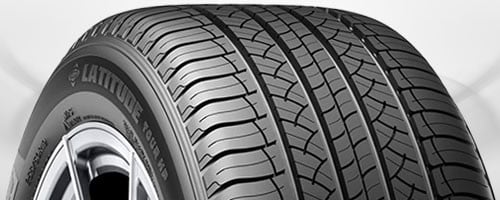
SUV owners need tires that handle both increased vehicle weight and diverse driving conditions. All-season SUV tires are specifically engineered to meet these demanding requirements, offering enhanced load capacity while maintaining year-round versatility for larger vehicles.
The construction of all-season SUV tires utilizes advanced rubber compounds that perform consistently across temperature variations. These specialized compounds work alongside strategically placed sipes in the tread pattern, which channel water away effectively and improve wet weather traction.
SUV tires require reinforced sidewall construction to support heavier vehicle weights and accommodate occasional light towing duties. We recommend looking for models from proven manufacturers like Michelin, whose CrossClimate2 delivers exceptional performance across multiple test categories.
Quality all-season SUV tires display comprehensive certification markings including the Three-Peak Mountain Snowflake (3PMSF) symbol, cloud with rain designation, sun symbol, and "M+S" (mud and snow) rating. These markings indicate the tire has been tested and proven for various weather conditions.
Pros:
Reliable performance across dry, wet, and light winter driving conditions
Strong road grip during cornering maneuvers and excellent aquaplaning resistance
Superior fuel efficiency through optimized rolling resistance design
Eliminates the need for seasonal tire changes
Cons:
Limited effectiveness on snowy roads compared to dedicated winter options
Performance may decline in temperatures below -10°C
Not recommended for extreme weather conditions or mountainous terrain
All-season SUV tires work best for drivers in moderate climates who rarely encounter extreme weather conditions. These tires deliver optimal performance for city commuting and highway travel scenarios.
When properly maintained and used within their design parameters, quality all-season SUV tires typically provide approximately 50,000 kilometers of dependable service. They represent an excellent choice for SUV owners seeking convenience and reliability without the complexity of seasonal tire changes.
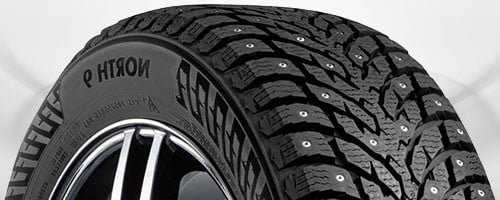
Truck owners face winter challenges that standard passenger car snow tires simply cannot handle. Winter truck tires are specifically engineered to deliver reliable traction while supporting heavy loads and towing demands on icy and snow-covered surfaces.
The key to winter truck tire performance lies in their specialized rubber compounds that remain flexible below 45°F, unlike all-season or mud tires that stiffen and lose grip in cold conditions. These tires feature aggressive tread designs with deep grooves and numerous biting edges engineered to channel away snow and slush while maintaining solid road contact. Look for the Three-Peak Mountain Snowflake (3PMSF) symbol on quality winter truck tires—this certification means they've successfully passed rigorous snow traction testing.
Load rating takes on critical importance when selecting winter truck tires, as this specification determines the maximum weight each tire can safely carry. For drivers facing the harshest winter conditions, studded versions offer metal studs that extend slightly from the tread surface to bite into packed ice.
Pros:
Superior traction on snow, ice, and slush compared to all-season alternatives
Improved handling and reduced braking distances in winter weather
Maintain grip effectiveness when temperatures drop and other tire types lose flexibility
Cons:
Require removal when temperatures consistently stay above 45°F to avoid premature wear
Need adequate storage space during warmer months
Higher upfront cost compared to standard truck tires
Winter truck tires are essential in regions where temperatures stay below 45°F for months at a time. While all-terrain tires offer decent snow performance, dedicated winter truck tires provide significantly better traction in severe winter weather. Truck owners who regularly haul heavy loads or pull trailers during winter months will find these specialized tires worth the investment.
| Tire Type | Key Features | Best Use Cases | Main Advantages | Main Disadvantages | Typical Lifespan |
|---|---|---|---|---|---|
| All-Season | - Large tread blocks with water-channeling grooves - M+S designation - Balanced tread depth design |
Moderate climates with minimal extreme weather | - Year-round convenience - Cost-effective solution - Reliable durability |
- Performance compromises in extreme conditions - Limited grip below 45°F |
Up to 50,000 km |
| Summer | - Shallow tread depth for maximum contact - Large tread blocks - Heat-resistant rubber compound |
Warm climates or seasonal use above 45°F | - Superior dry and wet handling - Shorter stopping distances - Enhanced wet weather performance |
- Dangerous in cold weather - Seasonal use limitations |
20,000-40,000 miles |
| Winter | - Cold-weather rubber composition - Deep tread with aggressive pattern - 3PMSF certification |
Regions below 44.6°F for extended periods | - 30% improved snow braking - Superior cold weather grip - Enhanced winter cornering |
- Must remove above 45°F - Storage space required - Faster warm weather wear |
Not specified |
| All-Terrain | - Chunky, aggressive tread patterns - Reinforced sidewall construction - Extended shoulder tread |
50/50 on-road/off-road driving | - Versatile terrain performance - Enhanced puncture resistance - Rugged appearance |
- Increased road noise - Stiffer ride quality - Reduced fuel efficiency |
Not specified |
| Mud-Terrain | - Large lugged tread blocks - Wide spacing for self-cleaning - 3-ply sidewall protection |
Extreme off-road conditions | - Maximum off-road traction - Self-cleaning capability - Outstanding puncture resistance |
- Loud on pavement - Poor wet road traction - Higher fuel consumption |
Not specified |
| Performance | - Soft grip-maximizing compound - Wide contact patch design - High speed ratings (H-Y) |
Sports cars and performance vehicles | - Superior handling precision - Enhanced braking performance - Responsive steering feedback |
- Shorter service life - Higher purchase cost - Poor cold weather performance |
20,000-30,000 miles |
| Touring | - Comfort-focused rubber compound - Flexible sidewall design - Wide, stable footprint |
Daily commuting and highway travel | - Smooth, quiet ride - Low road noise - Extended tread life |
- Limited performance capabilities - Poor extreme condition performance |
Up to 80,000 miles |
| Run-Flat | - Ultra-reinforced sidewalls - TPMS system required - Self-supporting design |
Urban areas with service access | - Drive 50 miles after puncture - No spare tire needed - Maintained control after air loss |
- 25-100% higher cost - Stiffer ride quality - Cannot be repaired |
6,000 miles less than standard |
| Ultra-High-Performance | - Advanced silica compounds - Large tread blocks - Extreme speed ratings (Z/W/Y) |
High-end sports cars and track use | - Maximum grip capability - Superior braking distances - Exceptional steering response |
- Short service life - High replacement cost - Poor cold weather performance |
25,000-34,000 miles |
| All-Season SUV | - Load-rated sidewall construction - Multiple weather certifications - Enhanced load capacity |
Moderate climates, SUV applications | - Versatile weather performance - Good fuel efficiency - No seasonal changes needed |
- Limited snow capabilities - Poor performance below -10°C |
50,000 kilometers |
| Winter/Snow Truck | - Cold-flexible rubber compound - Deep grooves and biting edges - 3PMSF certification |
Cold regions with heavy loads | - Enhanced winter traction - Better cold weather handling - Superior grip when others harden |
- Seasonal removal required - Storage space needed - Higher initial investment |
Not specified |
Choosing the right tires makes a critical difference in your vehicle's performance, safety, and driving comfort. We've covered eleven tire categories, each engineered for specific conditions and driving requirements. Your selection should match your driving patterns, local weather, and vehicle needs.
Climate drives tire selection decisions. Winter tires provide superior grip below 45°F, while summer tires excel in warm conditions. Your terrain matters equally—all-terrain and mud-terrain options deliver the traction needed for off-road adventures, while touring tires offer the comfort highway drivers demand.
Performance versus practicality requires careful consideration. All-season tires provide year-round convenience for moderate climates, but performance and ultra-high-performance options deliver the handling capabilities enthusiasts seek. Higher performance typically means shorter tread life, so your priorities should guide these trade-offs.
Budget planning should consider total cost of ownership, not just purchase price. Touring tires can deliver up to 80,000 miles of service, while performance variants typically require replacement after 30,000 miles. For expert guidance on tire selection and to find the perfect match for your vehicle, visit Performance Plus Tire where our knowledgeable team can help you choose the ideal option.
Safety remains the top priority regardless of your tire choice. Regular inspections, proper inflation, and timely replacements ensure optimal performance. The best tire balances your driving style, regional climate, vehicle requirements, and budget—making the right decision delivers better performance, enhanced safety, and superior value throughout your tires' service life.
Understanding tire types is crucial for vehicle safety and performance, as the right choice depends on your driving conditions, climate, and vehicle needs.
Match tires to climate conditions: Winter tires excel below 45°F, summer tires perform best above 45°F, while all-season tires work for moderate climates year-round.
Consider your driving terrain: All-terrain tires suit 50/50 on/off-road use, mud-terrain handles extreme conditions, while touring tires excel for highway comfort.
Balance performance with longevity: Performance tires last 20,000-30,000 miles but offer superior handling, while touring tires provide 80,000-mile durability with comfort focus.
Specialized features serve specific needs: Run-flat tires allow 50-mile driving after punctures, ultra-high-performance handles extreme speeds, and SUV tires support heavier loads.
Safety requires proper selection: Using wrong tire types (like summer tires in cold weather) significantly increases accident risk and reduces vehicle control.
The key to smart tire buying is matching your specific driving patterns, local weather conditions, and vehicle requirements to the appropriate tire category rather than choosing based on price alone.
The 7-7 rule suggests changing to winter tires when temperatures consistently stay below 7°C (45°F) for seven consecutive days, and removing them when temperatures remain above 7°C for the same duration.
Top tire brands for 2025 include Michelin, Goodyear, Continental, BF Goodrich, and Bridgestone. These manufacturers offer high-quality options for various vehicle types and driving conditions.
All-season tires provide year-round versatility in moderate climates but may compromise performance in extreme conditions. Specialized seasonal tires (like winter or summer tires) offer superior performance in specific weather conditions but require seasonal changes.
Ultra-high-performance tires feature advanced rubber compounds, large tread blocks, and high speed ratings. They provide superior grip, enhanced braking, and exceptional steering response, but typically have a shorter lifespan and higher cost.
Run-flat tires have reinforced sidewalls that allow driving for up to 50 miles after a puncture. They eliminate the need for a spare tire but are more expensive, provide a stiffer ride, and cannot be repaired after being driven flat.